- How to Install AAC Conductor
- Power cable current carrying capacity
- Guide on Low Voltage Aerial Bundling Cables(ABC Cab
- Guide to Electrical Insulators
- The difference between 3 + 2 and 4 + 1 on wires and
- What are the cable accessories?
- AWG (American Wire Gauge) to MM2 Conversion
- Cable Short Circuit Current Calculate
- Overhead conductor,poles,and gold fittings design
- OPGW Cable Line Design Several Key Issues[2]
E-Mail:info@dosensecable.com
Phone:+8613073786551
Tel:+8613073786551
Add:Zhengzhou, Henan,China
OPGW cable line design several key issues[1]
Overhead ground wire composite optical cable (Composite Fiber Optic Overhead Ground Wire, OPGW) is a composite fiber media in the overhead ground wire of the transmission line, and the ground wire and communication functions are combined into one. OPGW is a high-tech product that emerged from the late 1970s to the early 1980s, and has developed into a relatively mature technical product after more than 20 years of operation. On the basis of keeping the function and performance of the ground wire unchanged, it opens up a transmission channel with high speed, wide frequency band and low energy consumption. This adds a high-quality communication function to the traditional ground wire, effectively improving the use efficiency of the overhead ground wire. It has the advantages of being safe and reliable, not easily damaged by external forces, and does not require additional space corridors.
1 Selection of OPGW
The optical fiber layout of OPGW is divided into two types: loose sleeve and tight sleeve. The loose sleeve type means that the optical fibers in the OPGW are arranged in a curved shape in the optical cable sleeve, and the sleeve is filled with ointment; the tight sleeve type means that the optical fibers are arranged in a straight line in the optical cable sleeve, and about 1% is applied to the optical fibers during the production process. The external force corresponding to the elongation is screened, that is, a "prestress" is applied to the optical fiber. Due to the structural characteristics, the loose-fitting type has a lower price and is suitable for lines with light external load conditions and insignificant terrain changes; the tight-fitting type is more expensive and is suitable for harsh external load conditions, large terrain changes and ground wire stress. more complex lines. Now generally used is the loose type.
The selection principle of OPGW is generally considered and checked from the following aspects:
(1) It is necessary to meet the requirements of meteorological conditions, the requirements of its own tensile strength and the requirements of the allowable design load of the tower.
(2) The main technical data to be considered in the design of OPGW are: optical fiber type, optical fiber core number, optical cable diameter, optical cable cross-sectional area, optical cable unit mass, ultimate tensile strength, short-circuit current, DC resistance, elastic modulus, thermal expansion coefficient , annual average operating stress, minimum bending diameter, maximum coil length, etc.
(3) Under the condition that the ambient temperature is +15℃, there is no ice and no wind, and the sag of the other ground wire is consistent, the OPGW optical cable can be selected.
(4) OPGW allows the determination of short-circuit current. First determine the equivalent time of short-circuit current. Generally, when the short-circuit current of a 220kV line is large, the equivalent time of fault current can be considered as 0.3s. According to the short-circuit current provided by the system, the total short-circuit current of the line entering the ground is calculated, and the short-circuit thermal stability value of the OPGW and another ground wire is checked at the outlet of the substation by calculating the short-circuit current distribution between the OPGW and another ground wire. When a single-phase short circuit occurs on the line, a brief large current appears on the overhead ground wire, and the heat generated by the current increases the temperature of the optical cable and the shunt wire. Because of the short duration of the current, the heat does not dissipate into the surrounding environment, causing the wire to heat up. When the wire temperature exceeds its allowable temperature, it will seriously affect the safe operation. Therefore, meeting the thermal stability requirements is an important condition for determining the OPGW and the shunt line. For OPGW, the allowable short-circuit current and allowable temperature provided by the manufacturer are generally used, and we only check it.
(5) The OPGW must have a good level of lightning resistance. When lightning strikes the OPGW, the communication quality should not be affected, and the metal part should not be broken.
2 The choice of another ground wire that matches the OPGW
In order to meet the requirements of short-circuit current, simply increasing the cross-section of OPGW is not only uneconomical, but also extremely inconsistent and matched with another ground wire. The solution is to use a good conductor ground wire with better electrical conductivity for the other ground wire. Due to its low resistance and self-impedance, more current is distributed to the ground wire, which reduces the current through the OPGW, which plays an important role. Good diversion effect.
Although the resistance of the shunt line can be reduced very low, its inductive reactance drops very slowly, so the role of the shunt line has certain limitations. The shunt line, like OPGW, can be selected in sections according to the short-circuit current conditions everywhere in the line. It should be noted that the shunt line becomes thinner and more current is allocated to the OPGW, so the current of the OPGW will suddenly increase a lot, so the selection of the shunt line needs to be repeated calculate.
Welcome to inquiry to Dosense Cable ! Any question for OPGW design, production, supply and installation, please contact us ! Our email address info@dosensecable.com
- Previous:Chile's copper production capacity fell to 430,000 tons
- Next:OPGW Cable Line Design Several Key Issues[2]
-
2023-10-02How to Install AAC Conductor
-
2023-08-30Power cable current carrying capacity
-
2022-03-17What are the cable accessories?
-
2022-07-01AWG (American Wire Gauge) to MM2 Conversion
-
2022-05-10OPGW Cable Line Design Several Key Issues[2]





 info@dosensecable.com
info@dosensecable.com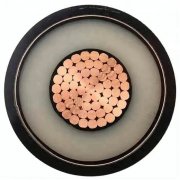

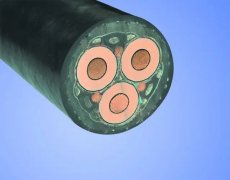
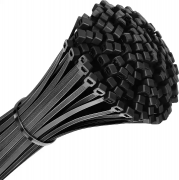
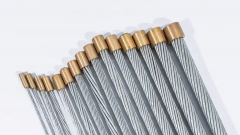
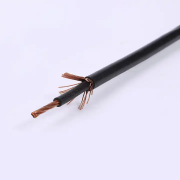
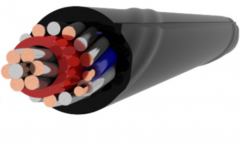


 Tel:
Tel:  Address: Zhengzhou, Henan,China
Address: Zhengzhou, Henan,China